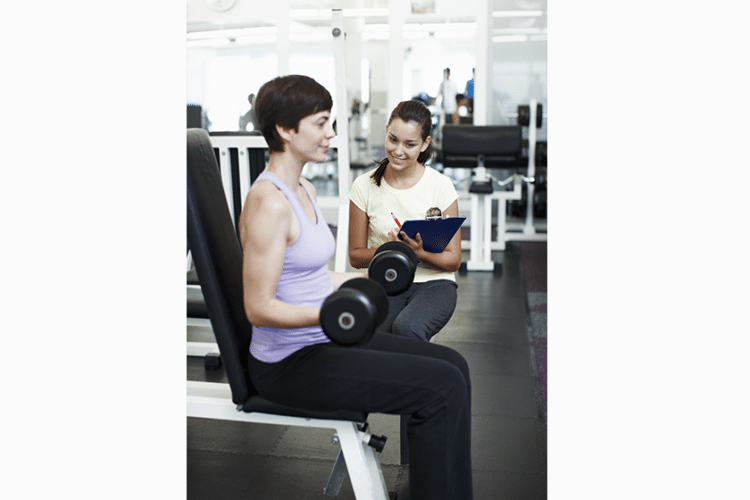
As a personal fitness trainer, you likely understand the importance of developing an individualized training routine for every client. Every individual is different and varying factors come into play in determining their ability and capacity when it comes to training. Through a comprehensive personal training assessment, you can understand your client’s capability and use this as the basis to develop a custom training routine.
What is a Personal Training Assessment?
A personal training assessment is an evaluative exercise that a trainer undertakes to measure a client’s fitness level and ascertain their health and physical status. It is an important onboarding step that helps the coach to understand the client’s body and collect baseline data. This data serves as the foundation for developing a suitable training routine.
Importance of Personal Fitness Evaluation
As a fitness professional, your ultimate objective is to help a client get desired results and to achieve them, you need to create the most suitable routine. A personal fitness evaluation or assessment helps you figure out what to include or eliminate from the program in line with the client’s unique circumstances. It can help a trainer to:
- Customize the fitness plan.
- Set realistic and achievable goals.
- Learn about a client’s limitations and how best to accommodate them.
- Help clients reach their goals more effectively.
- Set a benchmark for trackable progress.
Elements of a Well-Rounded Personal Training Assessment
A comprehensive fitness evaluation consists of specific elements that define every individual. They include:
General Health
A general health assessment includes checking body weight and vital signs such as blood pressure and resting heart rate, to establish baseline health metrics. It also involves understanding a person’s history including past physical injuries, current health condition, and any medications they are on.
Flexibility
Flexibility refers to the range of motion of a person’s joints and the mobility of their muscle groups. The purpose of this test is to assess potential limitations and imbalances.
It involves checking how far their shoulders can stretch, how high they can lift their body off the ground, and how far they can stretch to touch their toes in a sitting position. Use backbends, forward bends and twists to test spinal mobility and check whether the hips and quadriceps can extend fully. Measure ankle mobility as well as the soft tissues around joints to determine which areas require targeted stretching exercises.
Posture
Posture refers to the body’s alignment to give an idea of the muscles that require strengthening and those that require flexibility training. Take time to get a complete profile of the client’s body and take note of any deviations from what is typically considered a healthy posture or any signs of asymmetry. This check involves a visual analysis of their spine, shoulders, knees, ankles, and feet.
Common postures seen in new clients include forward head, lordosis, kyphosis, and flatback. Determine the category your client falls into so as to program the training sessions to help them achieve a healthy posture.
Movement
Movement assessments test a client’s mobility and highlight areas of weakness that a training program should prioritize. During this evaluation, check their ability to maintain the right body posture without experiencing pain. Get feedback on how they feel when performing each movement.
Some of the best ways to test core movement patterns include:
- Leg raise
- Squats
- Lunges
- Push-ups
- Hurdle steps
- Rotary stability
Body Composition
This has to do with the major components that contribute to the client’s weight such as fat, bones, and muscles. In addition to revealing their physical health, it also offers insight into their workout capacity. Furthermore, it is a great way to assess progress over time by evaluating changes in their muscle symmetry, fat distribution, and bone density.
Common tests used for this assessment include Body mass Index (BMI), body fat, and lean body mass using a Bioelectrical Impedance Analysis (BIA) device. It is also important to take measurements of the circumference of their waist, hips, and chest to get an estimate of fat distribution. Other evaluations include underwater weighing, 3D body scanning, and skinfold calipers.
Work Capacity
This test can determine the level of output that a client can produce during a workout session and how hard they can be pushed. For a beginner, the best way to test this is using various aerobic activities, while for more seasoned fitness enthusiasts, one-rep maxes and muscle endurance tests are more ideal.
These can give you an idea of their current fitness levels and provide guidelines on the capacity of training they can handle per day and the number of sessions they need per week.
Cardiovascular Test
While this is an optional evaluation, it is particularly suitable for clients with heart-related conditions, those recovering from an injury, or elderly individuals. The tests in this category measure the capacity of their heart and lungs that supply energy and oxygen during workouts.
An exercise stress test involves using a heart rate monitor and blood pressure cuff to check stress levels while exercising on a treadmill or stationery bike. Another option is a 12-minute run on a treadmill where you compare the pre-exercise and post-exercise heart and respiratory rates.
Fitness Evaluation Tips
Here are some tips to keep in mind when performing personal training assessments:
- Show respect for personal boundaries by always requesting permission before touching.
- Explain what you are doing and why you are doing it before every assessment. Keep the client involved every step of the way.
- Use a private space for tests like body composition, which could involve measuring areas that make the client feel self-conscious.
- Record all baseline measurements and data carefully as these will form the foundation for the entire training program and will help in tracking progress.
- After the assessment, discuss the results with your client and set realistic and achievable goals.
Taking the Guesswork Out of Personal Training
Implementing an effective personal training assessment can help you take the guesswork out of training and achieve your objectives seamlessly. It is the cornerstone of every efficient training program, helping the client reach their goals and assisting you to develop your skills as a professional trainer.
The National Personal Training Institute, Inc. offers personal fitness training and advanced personal fitness training programs to help you start or grow your career in this field. Our comprehensive educational programs cover every aspect of body building, weight training and management, physiology, health and wellness among other aspects. You can expect an immersive experience with hands-on training, preparing you for the job market and giving you the best shot at success.
Ready to launch a rewarding career as a personal fitness trainer? Reach out to us today for expert insights on how you can reach your goals with our educational programs.

